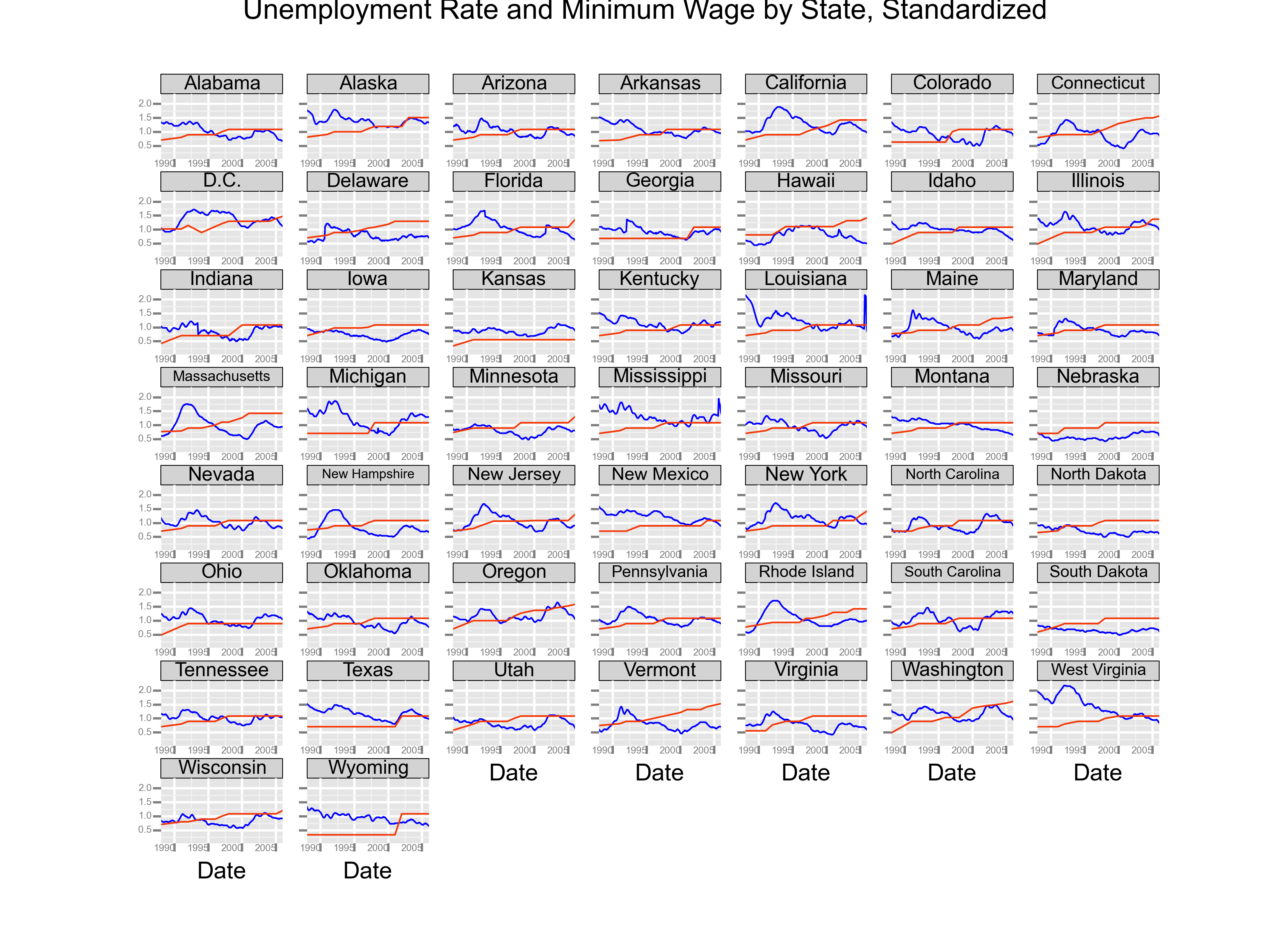Following up time! I’m sure I don’t need to link to the collection of papers and blog posts claiming minimum wage increases increase/decrease unemployment or the total employment level or the rate of job growth? Here’s John Schmitt at CEPR on why the minimum wage has no discernible effect on employment, and here’s the J. Meer Texas A&M paper on the relationship between minimum wage and labor dynamics. After that, you’re on your own.
One criticism of the previous post‘s approach brought up by Dr. Steve Steib1 (that I was totally going to mention anyway) is that state populations over time are not strictly comparable because people can move between states. Extreme cases here are pretty obvious. If North Dakota decreases its minimum wage to -$1,000 per hour (for science? To honor the ghost of Ayn Rand? As a bid to secure Paul Ryan’s transfer of citizenship? Whatever), low-wage workers, assuming their wages in ND set them below the poverty level for their family size in North Dakota, will move out of North Dakota, which will decrease the North Dakota poverty rate through selection rather than through any impact on people’s standard of living. Another criticism of the previous chart is that any relationship between poverty and the minimum wage might be attenuated by some sort of threshold effect: if the minimum wage is enough below the poverty level for full-time work, increases won’t affect the poverty level because there’s a large space for minimum wages higher than the current minimum but still below the poverty level. For those reasons, the poverty rate might not be a good proxy for the question “does increasing the minimum wage make people’s lives suck less?”, and it might be more useful to examine the impact on unemployment.
Examining unemployment in the context of interstate migration is also problematic. It’s possible that states that increase their minimum wages might attract in-migration. Ignoring the idea that firms lay people off for now (i.e., ceteris paribus), this in-migration increases the labor supply for a given level of labor demand, which, if wages are sticky downward, results in higher unemployment. If wages aren’t sticky downward, then wages in a region with a minimum wage increase should decrease. Both of these are testable predictions, which is nice, but for now, the raw, unexplained relationship between minimum wage and unemployment rates for different states is easier to display.
From a lazy, non-econometric approaches to visualizing the two time series, here’s what the relationship looks like between 1988 and 2006, with the unemployment rate2 in blue and the minimum wage2 in red:
Again, look at all that variation! Look at North Dakota! Steadily rising minimum wage with decreasing unemployment! Liberal point: PROVEN. But also, look at D.C. Unemployment sure was on the downswing before that minimum wage increase got out of control. Conservative point: PROVEN.
I’m not trying to say too much about what the “actual” relationship between minimum wage and unemployment and/or poverty is here. I think the point is probably something like “the relationship between changes in the wage-level and unemployment and/or poverty varies across space and time,” but that’s boring. Instead of that… look, graphs! But really, next time you hear that minimum wage increases will ruin everything/save us all, keep in mind both that meta-analyses tend to find a small and insignificant effect and that the impact of any minimum wage change will probably be dwarfed by what’s going on in the economy at large.
P.S. Github link is included above, but in case anyone wants to play with data, feel free to fork the repo. Current version of unemployment is monthly/seasonally adjusted. I’d like to do something similar with aggregated data from the monthly level (monthly unemployment series in Fred for not seasonally adjusted unemployment rates are just [state abbrev.]URN, and weights are just the size of the labor force in each month, which are [state abbrev.]LF. This isn’t hard, but I have a job and am sort of lazy?) to the annual level.
1 The actual facebook comment from Dr. Steib was “Intra state migration attracted by minimum wage differences???” The assumption that people don’t respond to their policy environment is a bit strong, so this is a point well taken, even if Matt Yglesias says people don’t move.
2 Standardization here was identical to standardization in the previous post, in which series were divided by their mean values to to bring the scales in line.

